Culture methods and matters needing attention of Paeonia lactiflora
Paeonia lactiflora belongs to Ranunculaceae and Paeonia lactiflora. There are fleshy thick taproots with tufted stems and purplish red and green stems and leaf peduncles. Leaves alternate, 2-3 compound leaves, leaflets 3-lobed. The flower bud is solitary at the top of the branch, and the Beginning of Summer blossoms before and after. Paeonia lactiflora is native to China and has wild species in Dabie Mountains, Qinling Mountains and Baihua Mountain in the west of Beijing, with a long history of cultivation. Peony flower color is bright, similar to peony, the flower is slightly fragrant, the flower color is pure white, light red, deep red, purple red, light red, golden yellow and other colors, there are single and double, usually cultivated for ornamental double varieties. The root of Paeonia lactiflora can be used as medicine with slightly bitter taste and analgesic effect.
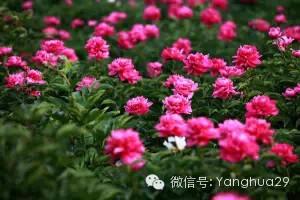
Paeonia lactiflora is cold-resistant, like fertilizer and afraid of waterlogging, like soil moisture, but also resistant to drought, sunshine and cool climate in summer. Potted peony is easy to scorch leaves under the scorching sun in midsummer, so you should pay attention to shading. Paeonia lactiflora is a fleshy root with a long root system, so it should be planted in sandy loam with fertile, loose and well-drained soil and perishable roots in clay and low-lying stagnant water.
Paeonia lactiflora
Paeonia lactiflora can be propagated by sowing, plant division, grafting, tissue culture and so on. When the fruit is harvested, put it indoors or in a cool place, turn it once every 2murs every 3 days, and release seeds from the pericarp after 15 days. Before sowing, the full particles sinking in the water are removed by water selection, and the seeds are soaked in warm water of 50 ℃. After 24 seconds, the seed coat becomes soft and soft, and the seed coat is thick. Soak the seeds with sulfuric acid for 3 minutes or with 95% alcohol for 30 minutes. Rinse clean with clean water. The on-demand sowing was carried out according to the row spacing of 6m ~ 9cm and the plant spacing of 3m ~ 4cm. After sowing, the soil is covered with 2cm soil and covered with plastic film, and the soil is covered with 6mi 8cm soil film to preserve soil moisture. The young roots were sent out in about 1 month, the seedlings basically appeared in the middle of March of the second year, and the 2-year-old seedlings could be transplanted. Ramet can be carried out from mid-September to late October. The root of Paeonia lactiflora was used as rootstock and 1-year-old short branches of Paeonia lactiflora were selected as scions, split grafting or cutting grafting, which were mostly used for the propagation of precious varieties.
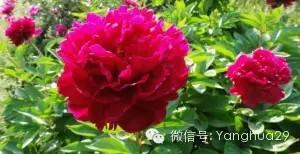
Peony planting
Peony like sunshine, cold-resistant, the temperature should be cool and afraid of heat, poor growth when high temperature in summer. Autumn is the best time to plant peony. Planting peony on the ground should choose sunny land with high topography and good drainage, and do not plant in low-lying places where water is easy to accumulate. Peony is a fleshy root. When planting, you should choose a loose, fertile ⑸ curse to swim the ⑺ bath, ⒅, palanquin, ⒓, , mulberry, , halo, , , dysentery, , Ω, , , Kangnan, ≡, sodium, T Yunba, Yumi, 40 cm, 50, 60 cm, the distance is about 100cm. Mixed fertilizers such as mature organic fertilizer, bean cake, bone meal and so on are applied in the hole. Trim the roots properly, cut off the diseased roots and broken roots, and then plant them with the original planting marks at the junction of the rhizome to cover the soil surface, and the pit soil should be fat and thin. After the peony is removed, put it in a cool and ventilated place for 3 days, plant it in the pit, lift the plant up when covering the soil, let the root straighten and gently step on the soil. If the peony is not dried when it is planted, it should be watered for 5 days after planting, so it is not easy to rot the roots. At the beginning of winter, covering soil around the surface of the root can prevent the occurrence of frost injury, and the cold-proof soil was removed at the beginning of February of the following year.
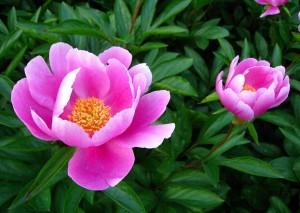
Fertilizer and water management
Paeonia lactiflora does not need to be watered frequently except natural precipitation. Usually only in the most water demand before and after flowering and in the event of spring drought before and after appropriate watering to supplement the lack of soil moisture: each watering should not be too much. It is an important principle of daily management of peony to dry rather than wet. Watering too often will cause root rot, withering and sagging of branches and leaves and other physiological phenomena: timely fertilization is an important measure to make peony flowers bright and colorful: topdressing should be controlled three times a year, the first time it is quickly drawn out in the new shoots. When the leaves and buds are stretching, they mainly apply quick-acting fertilizer, which is called flower-promoting fertilizer: for the second time, within half a month after the flower fade, this fertilization has a great impact on the growth of the plant and the increase of flower buds. The fertilizer effect is mainly quick-acting fertilizer, which is called bud-promoting fertilizer; the third time in autumn and winter, it plays an important role in enhancing plant growth in spring, and the fertilizer is mainly based on base fertilizer. The amount of fertilization depends on the plant growth status and varieties, generally five-year-old peony applied powder, fully mature cake fertilizer 0.5 kg, or high-quality organic fertilizer 5 kg. The method of fertilization is alternately trenched in ring or radial shape.
Shaping and pruning
In order to make peony flowers colorful and grow healthily, plastic pruning is very important. Peony plastic surgery mainly includes fixing stem, pruning, removing buds, thinning buds, cutting off residual flowers and so on. Paeonia lactiflora can be dried after 2-3 years. For the varieties with strong growth potential and exuberant growth, they can be pruned into independent peony. For the varieties with weak growth potential and small number of branches, the thin and weak branches are generally cut off and the strong branches are retained. After the peony was dried, the buds were removed and the useless branches which were too many and too dense were cut off every year, so that 7 full and evenly distributed branches were retained in each plant. Each branch retains 2 lateral flower buds, and the rest should be cut off, which can concentrate nutrients, promote plant growth balance and bloom luxuriantly.
Peony plants or potted plants should be trimmed three times a year. The first time in early March, there were 8 branches per plant, with 2 flower buds in each branch, and the rest was cut off; the second time, after flower fade, the residual flowers were cut off in time to reduce nutrient consumption; the third time, from late October to early November, various disease and insect branches, withered branches, overlapping branches, introverted branches, crossed branches and long branches were thinned. For the long branches that have room for development, leave appropriate length for short cut to fill in the blanks. For thin and weak branches and senescent branches, they can be truncated to stimulate the germination of adventitious buds and hidden buds-pruning is to maintain tree balance and exuberant growth.
Remove the residual leaves of Paeonia lactiflora in autumn and winter, because the disease of peony is transmitted through leaves. Therefore, thoroughly cleaning the fallen leaves at the base of the peony stem can significantly reduce the air damage of cattle in the coming year.
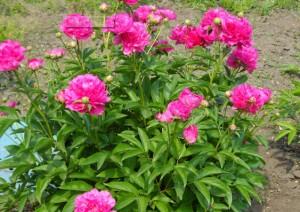
Pest control
The common diseases and insect pests of Paeonia lactiflora are brown spot, anthrax, rust, root rot and root nodule nematode disease, longicorn beetle, red spider, beetle, mole cricket and so on.
l. During the growth period of Paeonia lactiflora, from the beginning of the disease onset period, 65% mancozeb wettable powder 400 mol 600 times solution was sprayed every 7 to 10 days for 5 consecutive times, which could inhibit the occurrence and spread of the disease.
two。 Strengthen cultivation management, rational fertilization and watering, pay attention to ventilation and light transmission and summer cooling, so as to make the plant grow healthily and improve disease resistance.
3. Thoroughly remove dead branches and fallen leaves in winter and spring, and reduce the source of bacteria.
4. At the initial stage of the disease, 50% carbendazim or topiramate was sprayed with 500ml 1800 times.
Longicorn beetles, beetles and mole crickets can be sprayed or irrigated with 1000 times of dimethoate or dichlorvos EC.
The prevention and control of diseases and insect pests should give priority to early prevention, once diseases and insect pests occur. According to the degree of occurrence, according to the above-mentioned dosage, the interval between spraying should be appropriately shortened and the frequency of drug use should be increased.
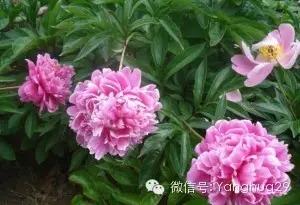
Matters needing attention
? Paeonia lactiflora can not be transplanted frequently after planting, otherwise it will damage the root and affect the growth and flowering. In order to make the peony grow well, reasonable fertilization is needed every year. The first application was in March, the second in April, the third in late May, the fourth after the End of Heat in late August, and the fifth in November. After each fertilization, enough water should be irrigated, and the soil should be loosened immediately to reduce water evaporation. Weeding should be often ploughed in the rainy season.
? After potted peony, Frosts Descent cut off the withered branches and leaves to prevent the breeding of diseases and insect pests. During the overwintering period, there is no need to move indoors, put it on the balcony or under the eaves where there is plenty of sunshine, and the basin soil should not be too dry.
? Before the peony blossoms, after the lateral buds appear, they can be removed in time to concentrate nutrients and promote the beauty of the top bud flowers. After the flower fades, if you do not plan to sow and reproduce, you should cut off the pedicel at any time so as not to seed and consume nutrients.
? The pests that harm peony are grubs, red spiders and aphids. In order to prevent grubs from eating peony root, 1000 times 50% phoxim diluent can be used for root irrigation in early spring every year. Dimethoate can be used to kill red spiders and aphids. The main disease of peony is brown spot, and its symptom is that brown spots appear on the leaves of peony in summer, and after autumn, the leaves wither gradually, even the whole plant dies. The method of prevention and treatment is to spray Bordeaux once or twice a month from April to the end of autumn.
-
Knowledge of flower cultivation
Wechat: yanghua29
Flower cultivation knowledge, ask and answer, solve the problem of flower cultivation!
- Prev
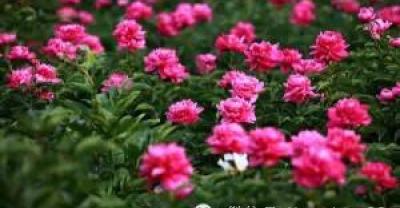
Introduction to several kinds of special poultry breeding
With the gradual improvement of people's living standards and the increasing demand for game food in the catering industry, it is necessary to develop special aquaculture to fill the market gap.
- Next

Technical exchange of grass carp culture and forage planting
The economic benefits of the four big fish and grass carp are good, and everyone likes breeding. When grass carp eat grass, everyone is innocent. Farmer uncle used to raise grass carp and mow his own grass.
Related
- On the eggshell is a badge full of pride. British Poultry Egg Market and Consumer observation
- British study: 72% of Britons are willing to buy native eggs raised by insects
- Guidelines for friendly egg production revised the increase of space in chicken sheds can not be forced to change feathers and lay eggs.
- Risk of delay in customs clearance Australia suspends lobster exports to China
- Pig semen-the Vector of virus Transmission (4)
- Pig semen-the Vector of virus Transmission (3)
- Five common causes of difficult control of classical swine fever in clinic and their countermeasures
- Foot-and-mouth disease is the most effective way to prevent it!
- PED is the number one killer of piglets and has to be guarded against in autumn and winter.
- What is "yellow fat pig"? Have you ever heard the pig collector talk about "yellow fat pig"?

